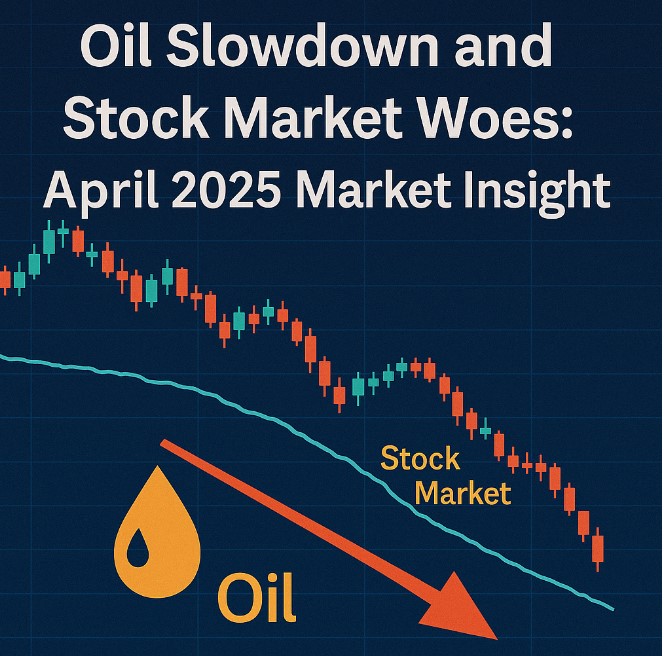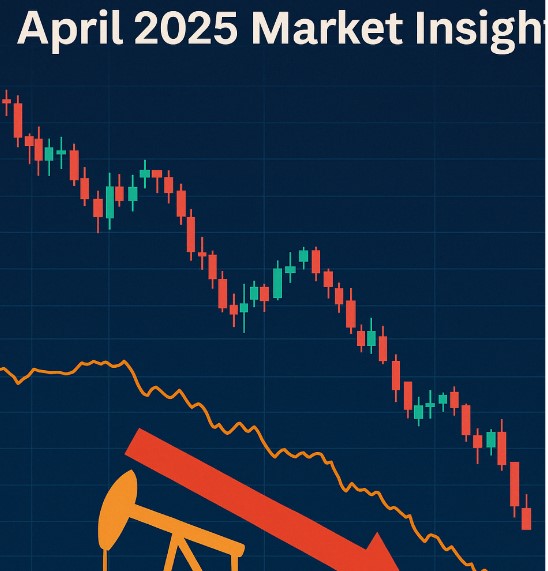
Oil Slowdown and Stock Market Woes: April 2025 Market Insights
In the wake of the volatile global market conditions, April 2025 has presented a unique set of challenges for investors. With a slowdown in the oil market and increasing tensions in the stock market, the financial landscape has become more uncertain than ever. Let’s break down the key factors driving this market turbulence and what it means for investors.
In today’s unpredictable market, both the oil slowdown and stock market downturn are a wake-up call for investors. The key lies in staying ahead of the curve—diversifying, focusing on defensive assets, and embracing long-term growth opportunities. The right strategy will make all the difference.
The Oil Market: A Slower Burn
The oil market, which has traditionally been a bellwether for global economic health, is facing a slowdown that has far-reaching consequences. The International Energy Agency (IEA) recently downgraded its global oil demand forecast for 2025 by 300,000 barrels per day. This adjustment comes amid growing concerns over the economic impacts of rising tariffs, geopolitical uncertainties, and the ongoing trade war between the U.S. and China.
Why is the Oil Market Slowing Down?
- Rising Trade Tensions: The ongoing trade war, particularly between the U.S. and China, has created an environment of economic uncertainty that is slowing global trade and demand for oil. As tariffs on goods increase, production and transport costs rise, putting a damper on the need for energy.
- Geopolitical Risks: Increasing tensions in key oil-producing regions, such as the Middle East, have made oil extraction and transportation riskier. While prices have spiked in the short term due to these concerns, the long-term outlook remains unclear.
- Shift to Renewable Energy: As countries around the world ramp up their commitment to renewable energy sources, traditional oil consumption is gradually declining. This shift, while positive for the environment, presents a challenge for oil-dependent economies.
Stock Market Woes: Bearish Sentiment Takes Hold
In parallel, stock markets around the world are facing significant headwinds. The S&P 500 and Nasdaq have both entered bear market territory, with many investors seeking safer assets amidst growing economic risks. The pullback in stock prices has been steep, with key indices losing a significant percentage of their value.
What’s Driving the Stock Market Decline?
- Inflation Concerns: Inflationary pressures have been a persistent concern, particularly in the wake of supply chain disruptions and rising costs of raw materials. Central banks around the world have been tightening monetary policy to combat inflation, but this has resulted in higher borrowing costs, which in turn, depresses stock valuations.
- Corporate Earnings Slump: Many corporations have reported lower-than-expected earnings for Q1 2025, citing rising operational costs and declining consumer demand. As profits shrink, investor confidence wanes, contributing to the market’s downward trend.
- Interest Rate Hikes: In response to inflation, central banks such as the U.S. Federal Reserve and the European Central Bank have raised interest rates. While necessary to curb inflation, higher rates also increase borrowing costs, which can negatively impact business investments and stock prices.

What Does This Mean for Investors?
With the combination of a slowing oil market and a declining stock market, investors are now faced with heightened uncertainty. So, what should investors do in this environment?
- Diversification is Key: In times of market uncertainty, it is more important than ever to diversify your portfolio. By spreading investments across different sectors—such as utilities, consumer staples, and gold—investors can hedge against risks posed by a single sector like oil or technology.
- Focus on Defensive Stocks: In a bear market, defensive stocks tend to perform better. These are stocks from industries like healthcare, utilities, and consumer staples that provide essential services and tend to be less affected by economic downturns.
- Alternative Investments: Given the volatility in both the stock and oil markets, investors may want to explore alternative investments such as real estate or private equity. These asset classes tend to have lower correlation with the public markets and can offer a degree of stability.
- Look for Growth in Tech and Renewables: Despite the broader market downturn, some sectors like renewable energy and technology continue to show promise. With growing concerns about the environment and the shift towards a greener future, renewable energy stocks may offer long-term growth potential.
- Keep an Eye on Central Bank Policies: The actions of central banks will play a crucial role in shaping market dynamics. Investors should stay informed about interest rate hikes and monetary policies that may either dampen or stimulate economic growth.
Conclusion: Navigating the April 2025 Market
April 2025 presents a challenging landscape for investors, with the oil market slowdown and stock market downturn creating an environment of heightened uncertainty. However, with the right strategy—emphasizing diversification, defensive stocks, and alternative investments—investors can weather this storm. Staying informed, being adaptable, and focusing on long-term goals will be essential in navigating the complex financial markets in the months ahead.
Are you ready to navigate the market turmoil of April 2025 and make smarter investment decisions?
